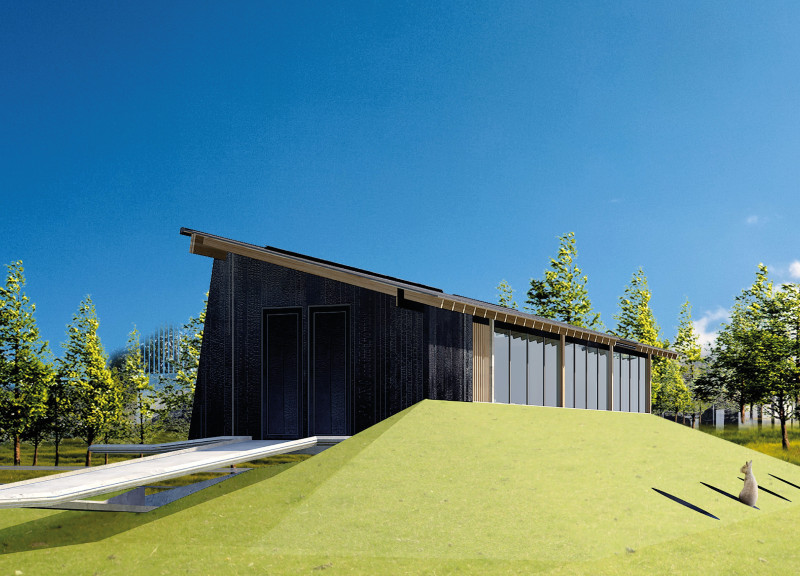5 key facts about this project
The primary function of the Pape Nature Park Gateway is to facilitate access to the park while providing essential amenities and information for visitors. The design incorporates various elements that cater to different user needs, promoting education, recreation, and social interaction. Key features include an entry area that establishes a sense of arrival and orientation for visitors, as well as dedicated spaces for parking and outdoor activities. The placement of a camping area encourages prolonged engagement with the natural environment, allowing visitors to fully immerse themselves in the serene surroundings.
The architectural design focuses on several critical components that enhance both functionality and aesthetics. A notable aspect is the integration of play and outdoor cooking zones, which are designed to accommodate families and foster a communal atmosphere. These spaces are intentionally placed to encourage social interaction among visitors, making the park not just a place to visit, but a destination for shared experiences. In addition, a strategically planted tree belt serves a dual purpose; it acts as a natural buffer that offers privacy while simultaneously enriching the landscape and supporting local wildlife.
Materiality plays a significant role in the design of the Pape Nature Park Gateway. A careful selection of local and sustainable materials underscores the project’s environmental commitment. Wood, concrete, and textured glass feature prominently throughout the structure, helping to establish a connection with the natural environment. The use of solar panels exemplifies a forward-thinking approach to energy consumption, allowing the building to operate sustainably within its ecological context. These materials are not only chosen for their aesthetic qualities but also for their durability and minimal environmental impact.
Unique design approaches characterize this project and distinguish it from typical visitor centers. The architectural elements creatively respond to the natural landscape, often mimicking organic forms found within the park. The interactive water features incorporated into the design serve both functional and visual purposes, providing a habitat for local wildlife while also enhancing the visitor experience through tranquil and reflective spaces. The design incorporates a wildlife corridor, ensuring that the movement of native species remains uninterrupted, further promoting biodiversity within the park.
The Pape Nature Park Gateway stands out for its comprehensive and thoughtful approach to integrating architecture with its surroundings. The careful planning of spaces and the strategic use of materials not only enhance the physical structure but also foster a deeper connection between visitors and the natural world. As visitors engage with the park, they are invited to learn about the local ecosystem and participate in recreational opportunities that promote outdoor activity and environmental stewardship.
This project exemplifies how design can influence human experiences in natural settings, making the case for more integrated architectural solutions in similar environments. Readers interested in learning more about the Pape Nature Park Gateway are encouraged to explore the project presentation for detailed architectural plans, architectural sections, and architectural ideas that provide a richer understanding of this innovative design.


























